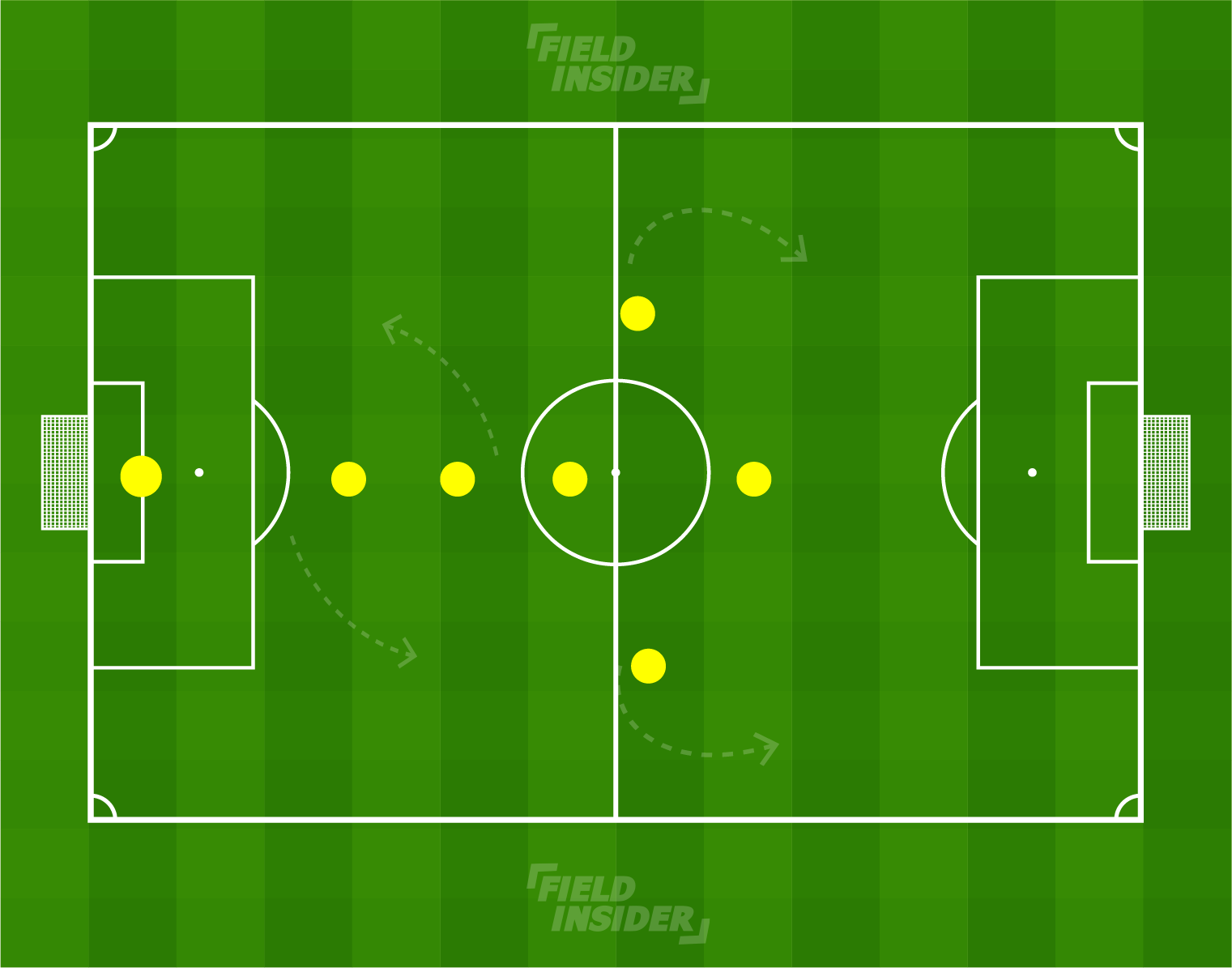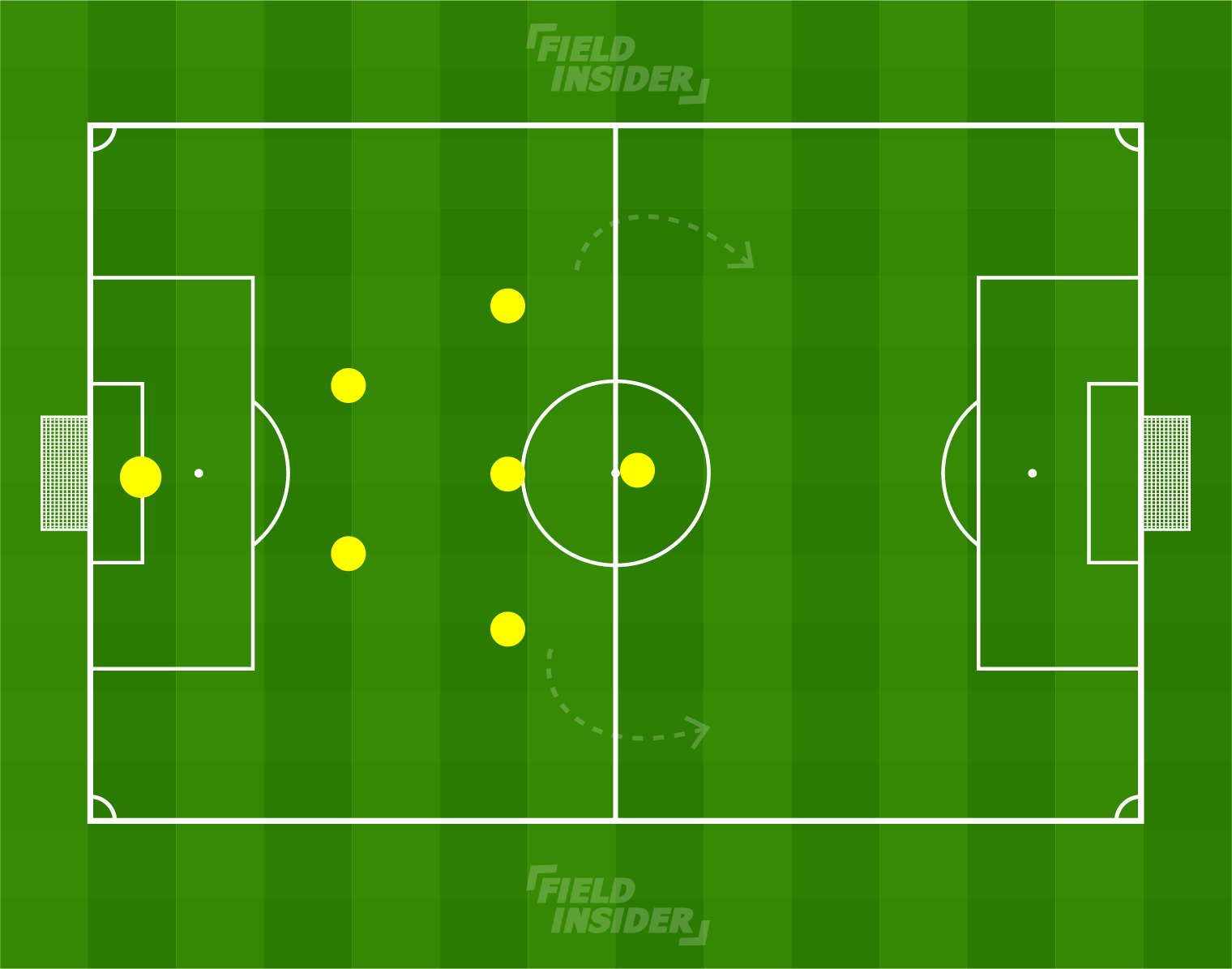How To Attack In A 7-A-Side: All That You Need To Know
Here comes the favourite part of football for most of the people; The Attack. Everybody wants to be a forward when they start kicking the ball, but unfortunately, that’s not realistically possible. But those of you, who are offensive players or attackers in a 7-A-Side team, or coaching such team and want to improve your attack, we have some important stuff for you guys and you are at the right place. Today, we will talk about all the essential principles which an attacker should know.
[powerkit_toc title=”Table of Contents” depth=”1″ min_count=”4″ min_characters=”1000″]
Before we get into relatively brief explanations there’s something which should be crystal clear, being an attacker or forward player, there are only two things which are your primary job: Score the goals or contribute to the goals. Of course, there will be other factors and aspects of the game which you will need to cover but these two are the main things expected from an attacker.
If you want to play organized football with a proper team plan, you’ll need to keep a lot of things insight, we know that sounds a bit heavy for a casual game but if you want to get better at the attack in a 7-A-Side or any other form of the game, there are basics you should know and keep by. Let’s get through those basics.

BASICS OF ATTACK IN A 7-A-SIDE
One aspect of this section which should be understood beforehand is that these are the general basics of attack for any kind of football, and they perfectly fit the soccer version in question.
Now, there are many types of attacking football that you may come around, the truth is, every coach and every team have their own set of attacking strategies and types they believe in. For example, Pep Guardiola, the genius tactician, he believes in possession and positional based attack in football.
On the contrary, we have seen Jose Mourinho using counter-attack strategies over the years. But the standards are always there and common in every attacking style. Basically, there are 5 basic components of attack in a 7-A-Side game or any other football game. According to Allen Wade, a 20th-century expert, these 5 rules are:
- PENETRATION.
- DEPTH.
- WIDTH.
- MOBILITY.
- CREATIVITY.
Read them again, as these 5 factors will play a huge role in the improvement of your attack in a 7-A-Side. Before we move on and get more specific about our topic, let’s go through all of these 5 principles one by one so you understand them better and be able to execute them in practical football matches.
PENETRATION
Never underestimate your opponents, never. There is always a defence to compete again, and you will always need to create spaces to hit the back of the net. And you can only do that by penetrating and pressing the defence of the opposition. How you can penetrate through the opposing defence?
There are three ways to beat the defence. You can dribble past it, you can orchestrate a creative pass to your teammate, or you can shoot towards the goal. Here’s another thing to keep in mind, your attackers should have these qualities otherwise, there won’t be any attacking threats from your team.
DEPTH
Depth or support is a very beautiful concept in our opinion. In any instance, only one player is carrying the ball, so the off-ball movements of the other 5 outfield players hold extreme importance. There are a lot of things that other players can do to provide depth and ensure the attacking rhythm. An excellent level of communication and understanding is required between the teammates for this area of attack in a 7-A-Side. Whether it’s disorganizing the opposing defence by the off-ball movements or providing passing options to your teammate ball carrier, it’s the depth of the team which will ensure the smooth attacking play of your team.
WIDTH
The concept of script is pretty simple, as it’s obvious from the name, you tend to use the wider areas of the pitch to draw the opposing defenders wide and create spaces for your teammates in the central areas of the pitch. This is usually done by the fast and creative wing-backs and offensive wingers. Playing wide helps you to deform the opponent’s defence greatly and create spaces. Simple as that.

MOBILITY
Once again we’re going to talk about the off-ball movements of your team. Your team needs to be mobile to break through the defense and this can be achieved by intelligent off-ball positioning of the players. Again, the core idea is to create spaces so the attacking threats can be made. Providing mobility is more about providing suitable passing angles to the ball carrier and precise over-lap sprints of supporting players.
CREATIVITY
The last step, creativity. There can be two types of creativity in a team, collective and individual. Collective creativity can be achieved by intelligent gameplays like tiki-taka or possession-based style. And individual creativity comprises of dribbles, feints, and other individual qualities. A little bit mixture of both is needed for a successful attack to flourish.
ATTACK IN A 7-A-SIDE AGAINST STRONG DEFENSES
- You will come around very strong and compact defences and that might be a challenge for your attack. Here is when you need to use these basics you just learned. You may want to go through them again. When facing a rock-solid defence, along with all the techniques and strategies, you need to be patient too. No matter how hard it is to create spaces and create chances, don’t lose your patience because the chance will come. Just stick to your shape and technique.
- There’s more to it, try to have as much possession as you can, because when your team will have the ball, it will be easy to control the tempo and pace of the game. Having control over the game will open up many scoring opportunities and eventually you’ll be able to unlock the hard-locked defence of the opposition.
- Lastly, try to have fluid movements and angles between your players for a better ball rotation, as the depth of your team matters a lot against the solid defences. We try to not make things sound difficult and too tactical but these concepts will help you a lot in creating spaces and attacking threats to the difficult defences.
- Remember, if you will stick, it will click.

EXECUTING THE STRATEGIES OF ATTACK IN A 7-A-SIDE
You can read all the theories and guides in the world but as long as you don’t have a perfectly tailored game plan, you can’t execute on all that knowledge. Since you’re here, so we will give you some initial steps to formulate a solid game plan and use all the previously discussed rules and guidelines practically, so your team can improve and play better-attacking football.
- Be aware of your players’ qualities and strengths, then select a line-up. Before opting for attacking football, assess your team and be sure about the attacking players in your arsenal. It’s a very relative subject and will help you a lot in assembling a successful line-up. For example, if you have fast-paced wingers who can utilize the width of the ground, you can assemble your players in 2-3-1 formation or even as 1-1-3-1 formation. This may vary.
- To have a dominant attack in a 7-A-Side match, you’re going to need some creativity too. As the field will be smaller and there will be fewer spaces to initiate the attack, you may need good creative play-makers and finishers in your team, who can press and attack more effectively.
- When you choose to attack in a 7-A-Side or any other type of football, it’s necessary to have a clear approach about the game. The whole squad should be on the same page about the plan. Whether you’re playing possession-based football, or you’re opting for direct/long balls or any other type of attacking. You need to stick to the plan and the results will be there.
CONCLUSION
Enough tactical discussion for one day, eh? Attacking gameplay is something which many teams crave for and it’s one of the most used tactical systems in the world. If there’s anything you’re not sure about the attack in a 7-A-Side football match, kindly read it again and don’t hesitate to ask. We’re here to help you out. See you the next time. Stay tuned.








